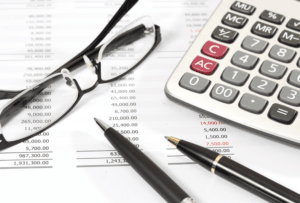
The second stage includes filling cleaned and sanitized bottles before placing a cap on each bottle. In the third stage, filled bottles are inspected, labeled, and packaged. Process costing is simpler than job costing since the production process is standardized, and costs are allocated based on a predetermined rate. Job costing is more complex since each job or project may have different requirements and costs. Since the costs are averaged, assessing the profitability of individual products or process stages is difficult. It can make it difficult for management to determine which product lines or processes should be eliminated if needed.
Computing Costs
The sticks are dried, and then sent to the packaging department, where the sticks are embossed with the Rock City Percussion logo, inspected, paired, packaged, and shipped to retail outlets such as Guitar Center. Process costing is an essential method of accounting that helps businesses accurately determine the cost of production. It is common in industries that produce homogenous products and can help identify areas where costs can be reduced and efficiency can be improved.
Submit to get your retirement-readiness report.
This method is also employed where it is not possible to ascertain the prime cost of a specific order. Mr Bean allows the staff to eat 5% of the chocolate as they work on Process 1. Process costing is particularly useful in industries where a large volume of identical or similar products are produced, as it provides an efficient way of calculating the cost of each unit. Process costing helps businesses identify areas where costs can be reduced or eliminated. By monitoring the production cost, companies can adjust their operations and reduce waste, increasing profitability. The problem will provide the information related to beginning work in process inventory costs and units.

Roles of Materials, Labor, and Overhead in Process Costing

As the product keeps completing the stage of production, the cost is added for each completed stage. Once, all the production activities are completed the product is ready with the full cost of the production. The finished material of one process constitutes the raw material of the next. Therefore, process costing as the finished material is transferred to the next process, the cost of each process is also transferred, until it ends in the finished stock account. To apply this to the real world, let’s look at the enrollment data for Sierra College, a community college located near Sacramento, California.
Operation cost in batch manufacturing
When the units are completed, they are transferred to finished goods inventory and become costs of goods sold when the product is sold. The difference between process costing and job order costing relates to how the costs are assigned to the products. In either costing system, the ability to obtain and analyze cost data is needed. This results in the costing system selected being the one that best matches the manufacturing process. Process costing is another method of keeping track of the costs of manufactured items.
The units that have been complete during the period have been completed in the above stage of the https://www.bookstime.com/articles/church-payroll. However, there are units that remain incomplete during the period that need to be considered as well. The process costing system allocates the cost of running the process to the batch of the products. It assumes that equal cost is incurred in each unit of production in the batch. The process costing is suitable for the manufacturing companies where identical/homogenous products are produced and there is no gap in the process of production. While both systems produce a cost of goods sold for a given period, Process Costing focuses on the product’s progression through various stages of production.
Process costing is not required a complicated accounting or IT system to collect data and calculate it. When we obtain enough information, only a simple spreadsheet is enough to complete the work. The company does not need to invest in an expensive accounting system just for product costing. The purpose of the calculation is to come up with the units that have been complete during the period under consideration. So, the cost can be allocated by getting it from the activities/processes that have been the actual cause of the cost incurred. It’s not suitable for the companies that have different products to be produced at each time.
- Recall that Desk Products, Inc., has two departments—Assembly and Finishing.
- A case study is used to demonstrate ABC and its impact on the decision process.
- Process costing is particularly useful in industries where a large volume of identical or similar products are produced, as it provides an efficient way of calculating the cost of each unit.
- Then, we compare the total to the cost assignment in step 4 for units completed and transferred and ending work in process to get total units accounted for.
- Wages paid to the labourers and other staff engaged in particular process are charged to the concerned process.
- Process costing is a method of cost accounting used to calculate the cost of producing a product or service in a manufacturing environment where products are made in large quantities and indistinguishable.

Manufacturing companies use a cost accounting technique to track and allocate the costs of producing a product or service. To calculate cost per equivalent unit by taking the total costs (both beginning work in process and costs added this period) and divide by the total equivalent units. The advantages of process costing include but are not limited to straightforward computation of the product cost, basic inputs in the process like direct material, direct labor, and overhead cost. Since there are eight slices per pizza, the leftover pizza would be considered two full equivalent units of pizzas. The equivalent unit is determined separately for direct materials and for conversion costs as part of the computation of the per-unit cost for both material and conversion costs.
- One type of costing system that is used in certain industries is process costing that varies from other types of costing (such as job costing) in some ways.
- In job order cost production, the costs can be directly traced to the job, and the job cost sheet contains the total expenses for that job.
- Examples of products manufactured using the job order costing method include tax returns or audits conducted by a public accounting firm, custom furniture, or, in a comprehensive example, semitrucks.
- The first in first out (FIFO) method of costing is used to introduce the subject of materials costing.
- There are many expenses which are incurred for more than two processes the total of such expenses may be apportioned either on suitable basis or at predetermined rate based on direct labour charges or prime cost etc.
- C This must match total costs to be accounted for shown in Figure 3.5 “Summary of Costs to Be Accounted for in Desk Products’ Assembly Department”.
This necessitates the employment of a separate Work in Process account for each major manufacturing activity. Examine the graphic below that compares job and process costing, noting in particular the difference in how costs are shifted out of work in process. Process costing entails handing off accumulated costs from one department to the next.

Calculating Unit Cost Under Process Costing
Clearly, full-time students take more classes each term and generally use more resources than part-time students. This refers to a conversion of part-completed units into an equivalent number of wholly-completed units. Where degree of completion of opening work in progress is not given, average method is used. Process costing is used by the industries where the goods are produced through the sequence of several processes. Process costing is suitable for industries like paint, oil refining, rubber, chemicals, sugar, paper, soap-making, textiles, etc.